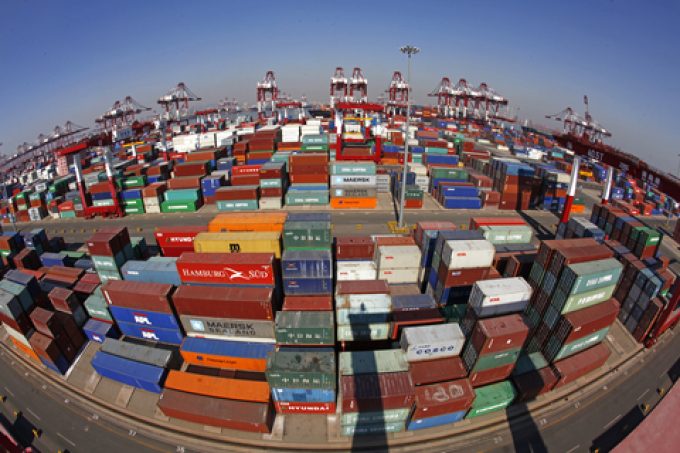European hauliers squeezed as rates fall and costs keep rising
Both spot and contract rates in the European road freight market have fallen as the ...
FDX: ABOUT USPS PRIVATISATIONFDX: CCO VIEWFDX: LOWER GUIDANCE FDX: DISRUPTING AIR FREIGHTFDX: FOCUS ON KEY VERTICALFDX: LTL OUTLOOKGXO: NEW LOW LINE: NEW LOW FDX: INDUSTRIAL WOESFDX: HEALTH CHECKFDX: TRADING UPDATEWMT: GREEN WOESFDX: FREIGHT BREAK-UPFDX: WAITING FOR THE SPINHON: BREAK-UP ALLUREDSV: BREACHING SUPPORTVW: BOLT-ON DEALAMZN: TOP PICK
FDX: ABOUT USPS PRIVATISATIONFDX: CCO VIEWFDX: LOWER GUIDANCE FDX: DISRUPTING AIR FREIGHTFDX: FOCUS ON KEY VERTICALFDX: LTL OUTLOOKGXO: NEW LOW LINE: NEW LOW FDX: INDUSTRIAL WOESFDX: HEALTH CHECKFDX: TRADING UPDATEWMT: GREEN WOESFDX: FREIGHT BREAK-UPFDX: WAITING FOR THE SPINHON: BREAK-UP ALLUREDSV: BREACHING SUPPORTVW: BOLT-ON DEALAMZN: TOP PICK

Increased demand has exposed cracks in China’s logistics infrastructure, but it’s hoping its new ‘five-year plan’ for the sector may be enough to stop an expected exodus of western multinationals.
The General Office of the State Council last month announced its first long-term plan for modernising China’s logistics system, with a focus on improving efficiency resilience and safety.
Although it is a five-year plan, according to state news agency Xinhua: “By 2025, a modern logistics system featuring supply/demand adaptation with internal and external connectivity will basically be in place.
“It will be safe, efficient, smart, and green, extending the value chain of logistics services, strengthening the service guarantee of modern logistics to people’s livelihood and improving the emergency response capacity of modern logistics.”
TI CEO Prof John Manners-Bell told The Loadstar China needed this investment if it was to “remain competitive”.
He said the past few years had shown that China’s transport and logistics infrastructure had struggled to cope with peaks in demand and that “considerable” investment would be required to increase capacity at ports, airports and in the road and rail system.
Prof Manners-Bell also said there would need to be a focus on driving down logistics costs as a proportion of GDP, requiring business reform, a reduction in tax and other levies and cutting congestion.
Where once China was seen as untouchable, with increasing hostility toward the west, sparked by President Trump’s trade war and exacerbated by Covid and concerns of conflict with Taiwan, many multinationals are now questioning their investment in the Asian giant.
Logistics managers told reporters cargo orders from China to the US fell by as much as 50% in November, with manufacturers relocating to “friendlier” countries.
“Western manufacturers are under pressure to look at alternative production locations in Asia, and China’s authorities will need to work hard to retain their position as the off-shoring market of choice,” said Prof Manners-Bell.
“Increasing supply chain efficiency, not least through digitalisation, and improving ‘green’ logistics credentials will be fundamental to meet the needs of global corporations.”
Pandemic-induced shortages of finished goods and crucial parts for manufacturing had exposed the cost of being over-reliant on one country for supplying the world and the need to expand logistics footprints.
Head of business operations at the Australian Freight and Trade Alliance John Park said global supply chains had failed to learn the lesson of putting “all your eggs in one basket”.
“In 2020, many businesses sought alternative supply points and new markets for finished products, many very successfully. However, with China opening, their need for materials and supply of finished goods will increase,” Mr Park told The Loadstar.
“Subsequently, we are hearing that many of those businesses will go back to trading in, and with, China – we have not learned that putting all your eggs in one basket is a risky business.”
Comment on this article